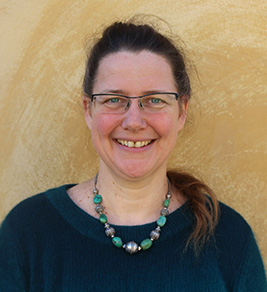How can marine protected area establishment be promoted to support the fulfillment of the Swedish “30 by 30″ ambition to protect marine biodiversity? Why is there only one marine national park so far, even if 30 years ago several areas were proposed? How can the conflicts that often arise against nature protection be addressed in a constructive way?
These are the questions that Dr. Andrea Morf, Senior Research Fellow at Nordregio and scientific coordinator at the Swedish Institute for the Marine Environment, has analysed. The researcher discussed these issues and possibilities on the Swedish Science Radio and with local fishers of the Co-Management Initiative Northern Bohuslän.
The world’s biological diversity and related ecosystem services are threatened both on land and at sea. The United Nations and the European Union are discussing how to protect significantly more nature than before, at least 30 percent of the entire planet’s surface. Also in Swedish waters, there are numerous proposals, some over 30 years old, such as those for new marine national parks, where so far only the Koster Sea marine National park on the west coast has been established.
“There is an urgent need to understand and address conflicts and resistance that often meet initiatives for environmental protection,” says Dr. Morf. Together with colleagues from Luleå Technical University and Södertörn University, the researcher has been exploring the enablers and obstacles to establishing new marine protected areas by the example of three marine national park proposals in Sweden: Koster, Nämdö and Sankt Anna. Koster national park was established in 2009, Nämdö is under development, and Sankt Anna has other protection than a national park.
According to Dr. Morf, important enablers include shared and trusted knowledge, dialogue and mutual learning, skilled facilitation, time and resources for such a process, strong drivers bringing the different key actors to the table, and all of this supported by regulations allowing flexible, place and context-sensitive approaches to protection.
Hear about what authorities and local actors are doing to address local conflicts about nature protection and local sustainable development.
Related Staff
Related Publications
Related external pages
- Balancing sustainability in two pioneering marine national parks in Scandinavia
- Exploring enablers and obstacles to policy-oriented learning in Swedish marine national park planning
- Disputed Policy Change: The Role of Events, Policy Learning, and Negotiated Agreements
- Krokiga vägar mot marina nationalparker
- Koalitioner och lärande i bildandet av marina nationalparker
- Policy brief: koalitioner och lärande i bildandet av marina nationalparker


